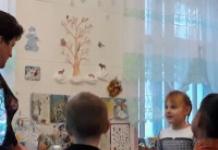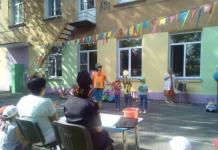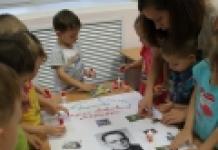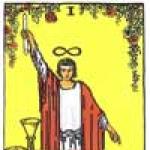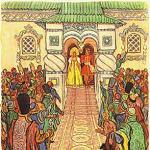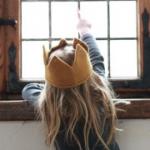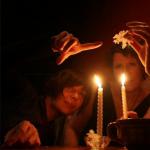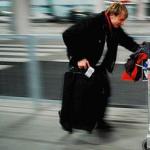Graduate work
Formation of elementary mathematical concepts in preschoolers 6-7 years old
Zhigalova Olga
Introduction
Chapter 1. Methodological techniques for the formation of elementary mathematical knowledge, by section
1.1 Quantity and counting
1.2 Counting using different analyzers, exercises in memorizing numbers
1.3 Counting groups of objects, dividing the whole into parts
1.4 Composition of numbers from units, ordinal counting
1.5 Consolidating knowledge about the reciprocal relationships between numbers. Composition of a number from two numbers less than this number
1.6 Teaching children to solve problems, teaching children to formulate arithmetic operations
1.7 Teaching children to measure, shape
1.8 Orientation in space and time
1.9 Methodology for familiarizing children 6-7 years old with the calendar
Chapter 2. Features of organizing work in mathematics lessons in a preparatory group for school
2.1 Learning new material
2.2 Notes of lessons conducted in preparatory, school, group
2.3 Lesson-fairy tale with elements of mathematics, creative tasks
Conclusion
Bibliography
Annex 1
Appendix 2
Introduction
By the time they enter school, children should have acquired a relatively wide range of interrelated knowledge about set and number, shape and size, and learn to navigate in space and time.
Practice shows that the difficulties of first-graders are associated, as a rule, with the need to assimilate abstract knowledge, to move from acting with concrete objects and their images to acting with numbers and other abstract concepts. Such a transition requires the child’s developed mental activity. Therefore, in the preparatory group for school, special attention is paid to the development in children of the ability to navigate in some hidden essential mathematical connections, relationships, dependencies: “equal”, “more”, “less”, “whole and part”, dependencies between quantities, dependencies of the measurement result on the size of a measure, etc. Children master ways of establishing various kinds of mathematical connections and relationships, for example, a method of establishing correspondence between elements of sets (practical comparison of elements of sets one to one, using superposition techniques, applications for clarifying relationships of quantities). They begin to understand that the most accurate ways to establish quantitative relationships are by counting objects and measuring quantities. Their counting and measurement skills become quite strong and conscious.
The ability to navigate essential mathematical connections and dependencies and mastery of the corresponding actions make it possible to raise the visual-figurative thinking of preschoolers to a new level and create the prerequisites for the development of their mental activity in general. Children learn to count with their eyes alone, silently, they develop an eye and a quick reaction to form.
No less important at this age is the development of mental abilities, independence of thinking, mental operations of analysis, synthesis, comparison, the ability to abstract and generalize, and spatial imagination.
Children should develop a strong interest in mathematical knowledge, the ability to use it, and the desire to acquire it independently.
The program for the development of elementary mathematical concepts of the preparatory group for school provides for the generalization, systematization, expansion and deepening of the knowledge acquired by children in previous groups.
Work on the development of mathematical concepts is mainly carried out in the classroom. How should they be structured to ensure children’s solid learning?
In the pre-school mathematics group, 2 classes are held per week, during the year - 72 classes. Duration of classes: first - 30 - 35 minutes, second - 20 - 25 minutes.
Structure of classes. The structure of each lesson is determined by its content: whether it is devoted to learning new things, repeating and consolidating what has been learned, testing children’s knowledge acquisition.
The first lesson on a new topic is almost entirely devoted to working on new material. Introduction to new material is organized when children are most productive, i.e. at the 3-5th minute. from the beginning of the lesson, and ends at the 15-18th minute. Repetition of what has been covered is given to 3-4 minutes. at the beginning and 4-8 min. at the end of the lesson. Why is it advisable to organize work this way? Learning new things tires children out, and repeating material gives them some relief. Therefore, where possible, it is useful to repeat the material covered while working on new ones, since it is very important to introduce new knowledge into the system of previously acquired ones.
In the second and third lessons on this topic, approximately 50% of the time is devoted to it, and in the second part of the lessons they repeat (or continue to study) the immediately preceding material, in the third part they repeat what the children have already learned.
When conducting a lesson, it is important to organically connect its individual parts, ensure the correct distribution of mental load, and alternation of types and forms of organizing educational activities.
Lesson structure options
1st option
1. Repetition to introduce children to a new topic - 2-4 minutes.
2. Review of new material - 15-18 min.
3. Repetition of previously learned material - 4-7 minutes.
A lesson in which children are first introduced to the techniques of measuring the length of objects can be structured something like this:
Part 1. Comparing the length and width of objects. Game "What has changed?" - 5 minutes.
Part 2. Demonstration of techniques for measuring length and width with a conventional measure when solving a problem of practical equalization of the sizes of objects - 10 min.
3rd part. (Reinforcement of knowledge.) Children’s independent application of measurement techniques during a practical task - 10 min.
Part 4. Exercises in comparing and grouping geometric shapes and comparing the numbers of sets of different shapes - 5 min.
2nd option
1. Continuation of work on studying a new topic - 13-15 minutes.
2. Continuing the study of the immediately preceding material or consolidating it - 8-12 minutes.
3. Repetition of what was previously covered - 4-5 minutes.
A lesson can be structured approximately this way, in which work on learning to measure length continues.
Part 1. Recalling familiar measurement techniques and demonstrating new ones - 5 min.
Children completing practical tasks independently - 8-10 minutes. Total - 13-15 minutes.
Part 2. Repetition of what has been covered. Exercises in dividing objects into 2 and 4 equal parts. Independent completion of practical tasks - 8 min.
3rd part. Exercises in orientation on the sheet plane using 2 tables. Game “Where is what?” - 3-4 min.
3rd option
1. Consolidation of material on a new topic - 8-10 minutes.
2. Reinforcement of 3-4 previously studied program tasks - 12-15 minutes (of which 3-5 minutes are devoted to repeating material, knowledge of which ensures the transition to studying the next topic).
These examples can only be considered as possible options for the structure of the lesson.
Object of study- is a child.
Subject of study– these are tasks and techniques that are used in kindergarten classes.
Research hypothesis– the use of certain methods, tasks and techniques when studying mathematics in kindergarten directly affects children’s understanding of the material.
The relevance of research– is to show that, along with the basic concepts necessary in a child’s life, they also receive basic knowledge in mathematics. The diploma project reflects how the learning process is structured in a preparatory school group.
Research objectives :
1. Consider the tasks and techniques that are used when working with children.
2. Consider methods for studying elementary mathematical concepts.
3. Consider the exercises that are used in mathematics classes.
4. consider the material that children must learn during the school year.
Research methods:
1. visual aid method
2. practical training method
3. use of educational games
Chapter 1. Methodological techniques for the formation of elementary mathematical knowledge, by section
1.1 Quantity and counting
At the beginning of the school year, it is advisable to check whether all children, and especially those who have come to kindergarten for the first time, can count objects, compare the number of different objects and determine which are more (less) or equal; what method is used to do this: counting, one-to-one correlation, identification by eye or comparison of numbers? Do children know how to compare the numbers of aggregates, distracting from the size of objects and the area they occupy?
Sample tasks and questions: “How many big nesting dolls are there?” Count out how many small nesting dolls there are. Find out which squares are more numerous: blue or red. (There are 5 large blue squares and 6 small red ones lying randomly on the table.) Find out which cubes are more: yellow or green.” (There are 2 rows of cubes on the table; 6 yellow ones stand at large intervals from one another, and 7 blue ones stand close to each other.)
The test will tell you to what extent children have mastered counting and what questions should be paid special attention to. A similar test can be repeated after 2-3 months in order to identify children’s progress in mastering knowledge.
Formation of numbers. During the first lessons, it is advisable to remind children how the numbers of the second heel are formed. In one lesson, the formation of two numbers is sequentially considered and they are compared with each other (6 - from 5 and 1; 6 without 1 is equal to 5; 7 - from 6 and 1; 7 without 1 is equal to 6, etc.). This helps children learn the general principle of forming a subsequent number by adding one to the previous one, as well as obtaining the previous number by removing one from the subsequent one (6-1 = 5). The latter is especially important because children are much more difficult to obtain a smaller number, and therefore highlight the inverse relationship.
Lesson objectives:
1. Fixing the composition of the number and number 6 on visual material.
2. To form cooperative relationships in children when solving educational problems, to cultivate in them the ability to empathize with the successes and failures of their comrades.
3. Develop logical thinking, attention, memory.
4. Learn to think and analyze when working in class, and be able to justify your choice.
Material for the lesson:
Model of composition of number and figure 6; visual material of the composition of the number 6 (for each child); model of the week (for each child); calendars (for each child); calendars: flip-up, wall-mounted.
Organizing time:
Sit down! We got ready for class.
In previous lessons, we consolidated the composition of the number 3, 4, 5 and got acquainted with the composition of the number 6. And today, I invite you to consolidate the composition of the number 6.
Progress of the lesson:
You have cards with pictures on your tables, I suggest you try to determine the different compositions of the number 6 yourself.
(children's work)
Well done, who wants to tell me how you did it? Look, I have this little house in which I propose to put the numbers that make up the number 6.
(children's answers)
That's right guys. Now you and I will play a game called “Which hand has how much.” I will think of examples, and you will guess: how many cubes are in my right hand, in my left, and then how many in both together.
(A game is played. First with everyone together, then in pairs)
Physical education minute
On Monday I did the laundry
I swept the floor on Tuesday, and baked kalach on Wednesday.
I spent the whole Thursday looking for the ball.
I washed the cups on Friday
And on Saturday I bought a cake.
All my girlfriends on Sunday
Invited me for my birthday.
Sit down at the tables. Guys, who can tell me what was discussed in the physical session?
(children: answers)
Of course, about the days of the week. Today I have prepared for you several problems about the days of the week.
When completing the task, rely on the models of the week if it is difficult for someone.
- It was Monday yesterday. What day of the week will the day after tomorrow be? (Thursday)
Well done, many of you answered the question correctly. Who can explain how he reasoned and how he reasoned when determining the day? Show this on the model.
(children show and explain)
Right. We listen to the following tasks:
- On Tuesday we sowed oats. In three days the first green shoots will appear. On what day will this happen? (Friday)
Guys, be careful when solving the next problem. You can count the days not only forward, but also backward.
- My grandfather’s short-term vacation lasted four days and ended on Tuesday. On what day of the week did your vacation start? (on Saturday)
- Grandma asked me: today is Wednesday. I've been visiting for 4 days already. I don’t remember when I came to you? (on Sunday)
Well done. Now let's talk about something else.
Weeks go by weeks and add up to months. Of course you know that every month has several weeks.
Who knows how many weeks there are in each month? Look at the calendars. The numbers that make up the week are written in columns. (children's answers)
Absolutely right. Look carefully how many such weeks there are in a month, let's count. Let's take the month of March. Please note, 1 or 2 days can be a week.
What kind of weeks are there? (answer: complete and incomplete)
How many full weeks are there in March? (answers: 4)
How many are incomplete? (answer: 2)
Well done boys. Tell me, is it necessary for the month to start on Monday? (answers)
Explain why? (children's answers)
Certainly. A month can start on different days of the week, but each month always starts on what date? (children: from first)
That's right guys, well done. Every month starts on the first day. Now let's count the months on the calendar and determine how many there are (children count: 12).
That's right. There are 12 months in a year. Today I will give you homework: everyone will take their calendar home, and together with their parents, mark the date of their birthday and their loved ones with a circle. And tomorrow bring it back to me.
Do you understand the task? (answer: yes)
Fine. Please tell me what new did you learn in class today? What did you like? Which task was difficult for you to complete and which was easy?
I really liked how they worked today...
Pavlova Irina Mikhailovna
Job title: teacher
Educational institution: MBDOU "Kindergarten No. 11"
Locality: Cheboksary. Chuvash Republic.
Name of material: article
Subject: Pedagogical conditions for the formation of elementary mathematical concepts in children 6-7 years old.
Publication date: 01.12.2016
Chapter: preschool education
PEDAGOGICAL CONDITIONS OF FORMATION
ELEMENTARY MATHEMATICAL REPRESENTATIONS
CHILDREN 6-7 YEARS OLD
THEM. Pavlova MBDOU "Kindergarten No. 11", Cheboksary
annotation
. The article outlines the relevance of the formation of elementary mathematical concepts in preschool age. A review of educational objectives for FEMP was carried out in accordance with the “From Birth to School” program implemented in a preschool organization. An analysis was carried out of one of the forms of organizing direct educational activities based on the use of the fairy tale “Geese and Swans” with children of the preparatory group for school.
Keywords
: quantity, measure, orientation in space. In modern life, the problem of teaching mathematics is becoming increasingly important. This is explained by the rapid development of mathematical science and its penetration into all kinds of fields of knowledge. Increasing the level of creative activity, problems of production automation, modeling on personal computers and much more presupposes that specialists in most modern professions have a sufficiently developed ability to clearly and consistently analyze the processes being studied. Therefore, the educational process in preschool organizations is aimed at developing in students the habit of fully logically arguing the processes and phenomena of the world around them. It is believed that the development of logical thinking in preschoolers is facilitated by learning the basics of mathematics. For
The mathematical style of thinking is characterized by clarity, brevity, accuracy and logic of thought. On this basis, the content of mathematics teaching in preschool organizations is systematically restructured. Thus, the introduced Federal State Educational Standard for Preschool Education (FSES DO) includes, among other things, the implementation of the educational field “Cognitive Development”, which involves the formation of primary ideas about the properties and relationships of objects in the surrounding world (shape, color, size, material, quantity , number, part and whole, space and time, etc.). One of the sections of the above educational area, namely “Formation of elementary mathematical concepts (FEMP),” is aimed at this in all general education programs, including the “From Birth to School” program. In addition, one of the targets at the stage of completion of preschool education, according to the Federal State Educational Standard for Preschool Education, is children’s possession of elementary concepts in the field of mathematics. Based on the foregoing, we will conduct a brief overview of the educational tasks for FEMP, which are outlined in the general educational program of preschool education “From birth to school” implemented in the MBDOU “Kindergarten No. 11” in Cheboksary. In all preschool groups, the FEMP section is represented by the following subsections: “quantity and counting”, “size”, “shape”, “orientation in space”, “orientation in time”. For example, in a preschool group, mastering quantity and counting, preschoolers gain a general understanding of the concept of “set” in different variations, improve their skills in quantitative and ordinal counting within 10, and become familiar with counting within 20 without operations on numbers, which allows the consolidation of a number of skills and abilities: a) understanding the relationships between numbers in the natural series; b) naming
numbers in forward and reverse order; c) decomposing a number into two smaller ones and composing a larger one from two smaller ones. An important point in mastering the subsection “orientation in space” is that children master the ability to navigate on a sheet of paper and reflect in speech the spatial arrangement of objects and their images. This skill is considered fundamental during further schooling for children to successfully master academic skills. Partial implementation of these tasks was carried out during the organization of direct educational activity (DEA) “Journey through the fairy tale “Geese and Swans”” with children 6-7 years old. In particular, during the GCD the following educational tasks were solved: a) development of the ability to form the number 7 from two smaller numbers; b) fixing the quantitative score within 15; c) an exercise in measuring length using an arbitrary measure; d) developing the ability to navigate on a sheet of squared paper. So, before starting to implement the first task, the guys and I first counted the number of swan geese that took Vanya, then the number of apples from the apple tree. In each case, poetic riddles were used. For example, to count the swans, the following riddle was used: Three geese are flying above us, / Two geese are behind the clouds, / Two are carrying Vanyushka-Vanya. And for counting apples there is another riddle: The apples in the garden are ripe / We managed to taste them / Six ruddy, pouring ones / One with sourness. And only after that the children completed the task from the apple tree, which consisted of composing the number seven from two smaller numbers. A set of numbers and signs “+” and “=” was laid out in front of the children. During independent individual work, everyone at his desk made up the number seven from different variations. Most of the students successfully completed this task.
The implementation of the second task involved solving a simple arithmetic problem involving addition (the smaller was added to the larger). The essence of the problem was this: “The oven baked pies: 10 pies with apples, and 5 pies with cabbage. How many pies did the stove bake?” Then the students counted how many pies were on each tray; They selected a plate with a number that corresponded to the number of pies. In order to ensure the principle of individualization and differentiation of the educational process, children were called by the number of trays to count. Then they checked each other's assignments. After that, all the pies were put in a basket. The third problem was solved as follows. As we know from the fairy tale, Mashenka, Vanya’s sister, went to save Vanya from the swan geese. So, the children, as if following Mashenka, approached the ribbon depicting the path to the forest. They were given the task of measuring the length of the path in steps. In order not to forget where the measurement ended, they placed a bump on each step of the child measuring the length of the ribbon-path. Then everyone together counted the number of cones, i.e. steps. It turned out that each time the number of cones was different. The conclusion that the children made was that although the measure is the same (step), the length of the ribbon is different, this is due to the length of the step, which is not the same for each child. The last task involved completing a task from Baba Yaga, who came out of the hut with a Vanya doll in her arms and set a condition: if the children completed her task, then she would let Vanya go home. The task was to draw one swan goose in cells. Each child, on his piece of paper, according to Baba Yaga’s verbal instructions, made up the image of a goose-swan. Thus, we hope that the gradual and systematic mastery of such mathematical skills will contribute to the development of basic academic skills in children.
METADATA REGISTRATION FORM
for posting a collection of articles in the Scientific Electronic Library (eLibrary) and inclusion of a collection of articles in the Russian Science Citation Index (RSCI) 1. Title of the article: “Pedagogical conditions for the formation of elementary mathematical concepts in children 6-7 years old.” 2. Information about the author: - last name, first name, patronymic of the author: Pavlova Irina Mikhailovna - place of work of the author: MBDOU "Kindergarten No. 11", Cheboksary - contact information of the author: 3. Subject heading: 372.3 4. Bibliographic list of references
Yulia Vishnevskaya
Goals: formation of mathematical skills, mental operations children; development of thinking.
Educational: consolidate knowledge children about geometric shapes, adding numbers (by counting) when solving simple arithmetic problems, ordinal counting skills; practice laying out geometric figures from counting sticks, transforming them from one to another,
Developmental: promote the development of figurative, logical thinking, imagination, involuntary attention, develop logical thinking, attention.
Educational: cultivate purposefulness, sustainability, interest in mathematical knowledge.
Stages Activities of the teacher Activities children Planned results
1. Motivational To drive ships,
To fly into the sky, you need to know a lot,
You have to know a lot!
Those children who answer the questions correctly can sit at the table.
1) name the neighbors of the number 7; 5;
2) list the winter months; spring months;
3) name which two digits must be added to get the number 8, 5;
4) count backwards from 10 to 5.
1) 6 and 8, 4 and 6
3) 4 and 4, 2 and 3
4) 10, 9, 8, 7, 6, 5 Emotional contact with the teacher. Readiness children to communication with adults and joint activities
2. Preparatory - Today, you and I will travel around the country mathematicians.
What do you think is mathematics?
Mathematics- This is the queen of all sciences. She studies quantities, numbers, geometric shapes.
At each of our stops and along the route, we have to complete simple and complex tasks.
I wonder, guys, what will we travel with today? How do you think?
Now we will check which of you guessed right! In front of you, the leaves on it have begun a drawing, you will need to finish it. Please note that the beginning of our drawing is marked with a red dot. Let's put the pencils at the beginning of the path, on the red dot. Attentively We listen to commands and carry out the task. Graphic dictation: 5 cells to the right, 2 cells down, 2 cells to the right, 2 cells down, 2 cells to the left, 1 cell diagonally left up, 1 cell diagonally left down, 3 cells left, 1 cell diagonally left up, 1 cell diagonally left down, 1 cell left, 2 cells up, 3 cells right, 2 cells up.
What did you get? What are we going to travel with? Assumptions children.
By helicopter, boat...
Car Gaining knowledge about mathematics as science.
Ability to perform graphic dictation.
3. Basic
4. Physical education lesson - While our car is rolling along the road, please tell me what day of the week it is today? If today is Friday, what day was yesterday? What day of the week will be in 2 days? How many days a week do you rest? How many days of the week do you know?
So we got to the city to talk "Fun logic puzzles"! Let's see who can figure it out the fastest and give the correct answer. We agree not to shout from our seats, but to raise our hand. Answer when I ask you.
1) How many horns do 2 cows have?
2) 4 are sitting on a tree birds: 2 sparrows, the rest crows. How many crows?
3) Vadim found 9 mushrooms,
And then another one.
You answer the question:
How many mushrooms did he bring?
4) Hedgehog gave the ducklings a present
Seven spring snowdrops.
Which one of the guys will answer?
How many ducklings were there?
5) 6 funny bear cubs
They are rushing for the snowdrop,
But one kid is tired,
I fell behind my comrades,
Now find the answer
How many bears are there ahead?
And we continue our journey! We can see a lot while traveling if we attentive. And now the task is for you such: Find geometric shapes in the group. I show you the figures, and you tell me all the objects that are similar in shape to the sample. Ready?
Square, circle, triangle, rectangle.
It's time to get out of our car and get some rest. We will do a dynamic exercise with you "On the Path"
Along the path, along the path Jumping on your right foot
Let's gallop on the right leg
And along the same path Jumping on the left foot
We gallop on our left leg
Don't slouch, chest forward Correct your posture
Wonderful people
Let's run along the path, easy running on tiptoes
Let's run to the lawn
On the lawn, on the lawn Jumping in place
We'll jump like bunnies
Sweetly stretched, Hands up, stretching
Everyone smiled.
Answers children
4) 75) 5 Repetition of the days of the week.
Ability to solve logical problems.
Repetition of geometric shapes and finding similarities with them in the surrounding world.
You need to compare the number of items depicted.
Well done! The quantity was determined correctly.
And while we're driving, so we don't get bored, let's solve logic problems with counting sticks.
1- count out 6 counting sticks and make a house out of them.
Arrange 2 sticks to form a flag;
2- count 5 sticks and lay out 2 equal triangles with a common side;
3- count 7 sticks and lay out 2 equal squares with a common side.
Add 2 sticks to make 4 triangles
Well, we are approaching the last station of our journey. A city of serious problems. Let's see how you can solve and compose problems!
What is shown in the picture?
Create a task "On the Ice" based on this picture, (Example compiled tasks: 8 penguins were swimming on an ice floe, they were joined by 3 more penguins. How many penguins are there?
How do we know how many penguins there are?
Write down the solution to the problem. Please read this decision.
Our journey across the country has ended mathematics, but we need to go back, so we get back into the car and go to our kindergarten. And while we're driving, let's have a little mental exercise warm-up:
If a ruler is longer than a pencil, then is it a pencil?
If the table is higher than the chair, then the chair?
If the road is wider than the path, then is it a path?
If the sister is older than the brother, then the brother? Compare the number of items.
Lay out figures with counting sticks
Sea, ice floe, penguins on it
You need to add 3 to 8 and you get 11
Younger Ability to compare objects by quantity.
Ability to construct with counting sticks.
Formation Ability to formulate simple problems and solve them.
Ability to measure objects by width, length, height, age.
6. Summing up - Now, we have reached our kindergarten. Did you enjoy traveling to "Country mathematicians» ?
What's happened mathematics?
We will also travel around "Country mathematicians» ? - Yes
- Mathematics is a science
Yes They learn to express their opinions.
Publications on the topic:
A newspaper for children and caring parents on the formation of elementary mathematical concepts “Pochemuchka” Author - compiler: T. F. Petrova Dear readers: children and adults (parents and teachers, in front of you is the newspaper “Pochemuchka”. In the newspaper.
 Abstract of an integrated educational activity for the formation of elementary mathematical concepts using ICT with children 4-6 years old “Travel.
Abstract of an integrated educational activity for the formation of elementary mathematical concepts using ICT with children 4-6 years old “Travel.
Abstract of GCD on the formation of elementary mathematical concepts for middle-aged children Purpose: - to train children in comparing equal and unequal groups of objects, using the technique of applying objects of one group to objects.
Summary of educational activities for the formation of elementary mathematical concepts with children 6–7 years old “Solving addition problems” GOAL: developing children’s ability to compose and solve arithmetic problems involving addition OBJECTIVES: 1. Continue to teach how to explain the structure of arithmetic.
Summary of a lesson on the formation of elementary mathematical concepts for children of the senior group Summary of a lesson on the formation of elementary mathematical concepts for children of the senior group on the topic: “Let's help Zimushka-winter” Software.
Municipal budgetary preschool educational institution "Kindergarten of compensatory type No. 70"
Card index of games for FEMP
for children 6-7 years old
Compiled by the teacher:
Zhuravleva E.V.
Bratsk 2015
1 "Broken Car"
Target: learn to notice irregularities in the depicted object.
Material: a machine consisting of geometric shapes, on which some part is missing.
Progress of the game . A machine consisting of geometric shapes is built on a flannelgraph. Then all the children, except one - the leader, turns away. The presenter removes any part of the machine. Whoever says before others what is missing and what shape it is in becomes the leader. If children cope with the task easily, you can remove two parts at the same time. (Annex 1)
2 "Dancing Men"
Target : develop visual attention, counting skills.
Content. Children spend 1 minute looking at a diagram map on which “dancing men” are schematically depicted. Time is recorded using an hourglass. 3a 1 minute, they must count only those little men who are standing still, and indicate their number with a number (card). After completing the task, the children check each other. (Appendix 2)
3 “Draw according to the description”
Target: development of attention and imagination.
4 “Place it in order”
Target: practice comparing objects by length and width.
Material. Sets of sticks (twigs) of different lengths and thicknesses. (5 sticks for each child).
Content. V. invites the children to lay out the sticks in front of them and asks: “How many sticks? What is the difference? Because the sticks are different sizes? How will you choose the right sticks in order to arrange them from the thickest to the thinnest? Remember that you need to immediately take the desired stick, you cannot try it on and apply it! After the task is completed, one of the children names the compared thickness of the sticks in the order of their location (thickest, thickest), indicates how many there are in total and which is the longest (shortest). Then the children arrange the sticks in a row in order from longest to shortest and determine where the thinnest and thickest are now.
5 “Find a paired picture”
Target : orientation on the sheet plane; learn to describe the location of geometric shapes on cards.
Content. 4-6 cards are hung on the board, paired cards are laid out on the table with the pictures facing down. V. explains the task: “Now we will play the game “Find a paired picture.” The one I call will take one of the cards on this table, name what figures are drawn on it and where they are located. Then he will find the same card among those hanging on the board and place his own under it.” V. can call the children one by one, without waiting until the required card is found.
6 “Group the shapes”
Target: learn to group figures according to specified characteristics.
Content. V. invites the children to take the figures out of the envelopes and lay them out in front of them, then asks: “How can you group the figures? How many groups will you get if you select the shapes according to their shape? What groups are these? How many shapes will be included in a group of rectangles? (circles)". Children group shapes. “How many rows of figures did you get? How many laps? (ovals, triangles, rectangles). Which figures are there more? Why do you think so? Which figures are equal? How else can you group shapes? (by color). How many groups will there be? (Children group the shapes by color and then by size.)
7 "Let's play with the figures"
Target: learn to divide objects into 2, 4 parts, reflect in speech the result of an action and the result of division.
Material: 2 rectangles of paper, tape, scissors; paper squares (2 each).
Content. “How to divide a rectangle into 2 equal parts?” says V. and asks someone to do it. If the child completes the task, V. explains what he did, whether the resulting parts can be called halves and why. Using the application, the child establishes the equality of the parts. V. shows the tape and says: “I will divide the tape into 2 parts (divides into 2 equal parts). Can such parts be called halves? Why? Clarifies the children’s answers: “These parts are unequal, so they cannot be called halves. We call 1 of 2 parts half only when both parts are equal. He offers one of the children to divide the second ribbon into 2 equal parts. (The child divides). “Can each of the tapes be called halves? Why? How many halves are there in the whole object? The teacher asks the children: “Divide 1 square into 2 equal parts. Show me part 1. What to call such a part? How many halves are there in total? Show both halves. Connect them as if you had a whole square and place it in front of you. What have you done? What did you get? How many times did you fold the square in half to get two equal parts? And if you fold the square in half, and then each part in half again, how many parts will you get? Divide the second square into 4 equal parts. How many parts did you get? Show 1 of 4 parts. Show 2 (3, 4) parts. Connect the 4 parts so that you get a whole square. Trace the whole square and 1 of 1 parts with your finger. What is larger (smaller): the whole square or part of it?
8 “Going to the cinema”
Target: practice ordinal counting within 10.
Material . Set canvas with 10 stripes, cards with 2 numerical figures (“movie tickets”).
Content. V. addresses the children: “Imagine that this is not a typesetting canvas, but a cinema hall, where every pocket is a chair. How many rows of chairs are there in total? Who wants to count the rows in order? How many chairs are there in each row? Let's all say together the number of each chair in the first row. (Ordinal counting in chorus). Each of you has 1 picture of different animals o. These are the spectators. I’ll have to get them a movie ticket.” The box office is on my desk. Then you need to help the audience take their seats. Each row ticket has the row number at the top and the seat number at the bottom. The teacher invites the children one by one to his table. Everyone takes a ticket, loudly calls out the row and seat number and places the picture in their pocket. Are the others checking to see if the correct location has been found?
9 "Boys"
Target . Reinforce counting and ordinal numbers. Develop ideas: “tall”, “short”, “fat”, “thin”, “the fattest”, “the thinnest”, “left”, “right”, “to the left”, “to the right”, “between”. Teach your child to reason.
What are the boys' names?
In the same city there lived inseparable friends: Kolya, Tolya, Misha, Grisha, Tisha and Seva. Look carefully at the picture, take a stick (pointer) and show who their name is, if: Seva - the tallest; Misha, Grisha and Tisha are the same height, but Tisha is the fattest of them, and Grisha is the thinnest; Kolya is the shortest boy. You yourself can find out whose name is Tolya. Now show the boys in order: Kolya, Tolya, Misha, Tisha, Grisha, Seva. Now show the boys in this order: Seva, Tisha, Misha, Grisha, Tolya, Kolya. How many boys are there in total?
Who is standing where?
Now you know the names of the boys, and you can answer the questions: who is to the left of Seva? Who is more to the right than Tolya? Who is to the right of Tisci? Who is to the left of Kolya? Who stands between Kolya and Grisha? Who stands between Tisha and Tolya? Who stands between Seva and Misha? Who stands between Tolya and Kolya? What is the name of the first boy on the left? Third? Fifth? Sixth? If Seva goes home, how many boys will remain? If Kolya and Tolya go home, how many boys will remain? If their friend Petya approaches these boys, how many boys will there be then?
10 “Solve the simplest problems.”
1. A hen and three chickens were walking in the yard. One chicken got lost. How many chickens are left? And if two chickens run to drink water, how many chickens will remain near the chicken?
2. How many ducklings are there around the duck? How many ducklings will be left if one swims in the trough? How many ducklings will be left if two ducklings run off to peck leaves?
3. How many geese are there in the picture? How many goslings will remain if one gosling hides? How many goslings will remain if two goslings run off to eat grass?
4. Grandfather, woman, granddaughter, Bug, cat and mouse pull out the turnip. How many are there in total? If the cat runs after the mouse, and the Bug runs after the cat, then who will pull the turnip? How many are there?
Grandfather is the first. The mouse is the last one. If the grandfather leaves and the mouse runs away, how many will remain? Who will be first? Who is last? If a cat runs after a mouse, how many will be left? Who will be first? Who is last?
You can create other tasks as well.
11 "The Absent-Minded Artist"
Target . Developing observation skills and counting to ten.
Material . A set of cut pictures with numbers.
Application


